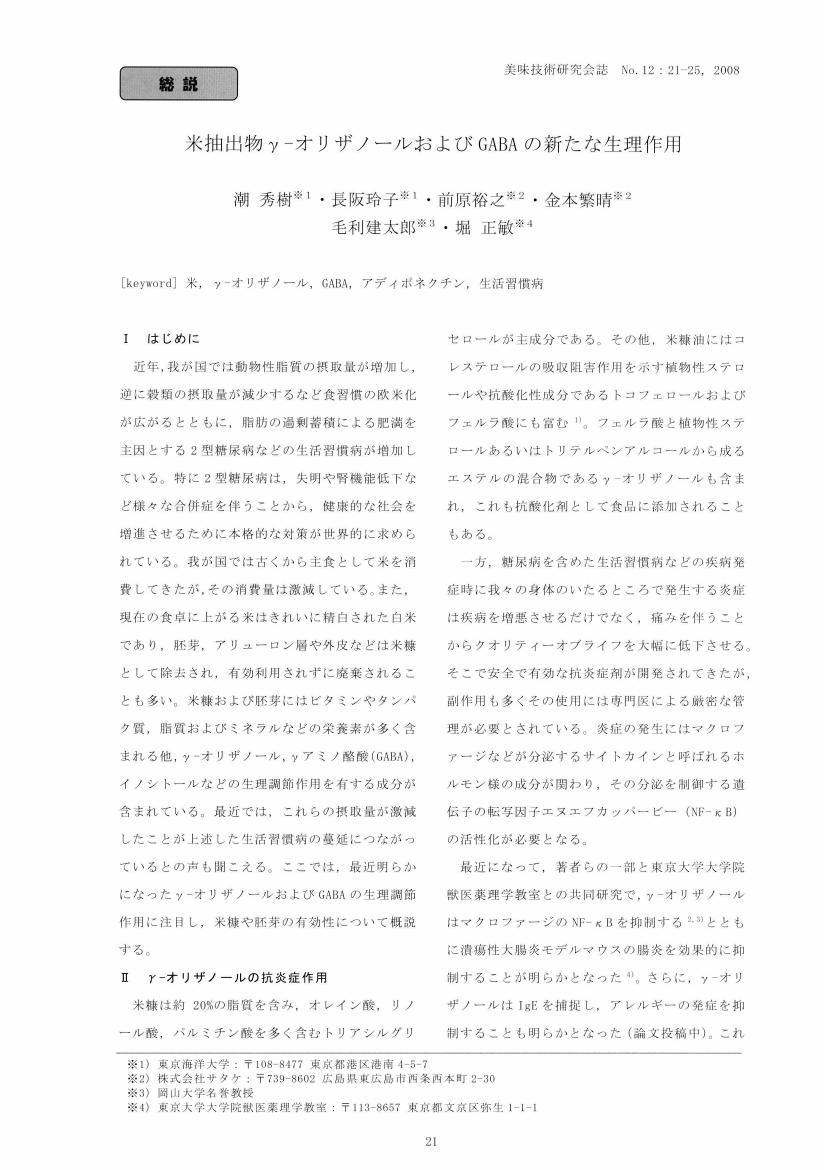8 0 0 0 OA 米抽出物γ-オリザノールおよびGABAの新たな生理作用
2 0 0 0 OA G, K, M型星でのスーパーフレア
- 著者
- 野津 湧太 前原 裕之 行方 宏介 野津 翔太 幾田 佳 本田 敏志 野上 大作 柴田 一成
- 出版者
- 日本地球惑星科学連合
- 雑誌
- JpGU-AGU Joint Meeting 2017
- 巻号頁・発行日
- 2017-03-10
Flares on G, K, M-type stars are sudden releases of the magnetic energy stored around the starspots, like solar flares. Recent high-precision photometry from space shows that "superflares", which are 10-104 times more energetic than the largest solar flares, occur on many G, K, M-type stars including Sun-like stars (slowly-rotating G-type main-sequence stars like the Sun) (e.g., Maehara et al. 2012 Nature). Such superflares emit harmful UV/X-ray radiation and high-energy particles such as protons, and may suggest that exoplanet host stars have severe effects on the physical and chemical evolution of exoplanetary atmospheres (cf. Segura et al. 2010 Astrobiology, Takahashi et al. 2016 ApJL). It is then important to know the detailed properties of such superflare events for considering the habitability of planets.In this presentation, we present statistical properties of superflares on G, K, M-type stars on the basis of our analyses of Kepler photometric data (cf. Maehara et al. 2012 Nature, Shibayama et al. 2013 ApJS, Notsu et al. 2013 ApJ, Maehara et al. 2015 EPS). We found more than 5000 superflares on 800 G, K, M-type main-sequence stars, and the occurrence frequency (dN/dE) of superflares as a function of flare energy (E) shows the power-law distribution with the power-law index of -1.8~-1.9. This power-law distribution is consistent with that of solar flares.Flare frequency increases as stellar temperature decreases. As for M-type stars, energy of the largest flares is smaller (~1035 erg) compared with G,K-type stars, but more frequent "hazardous" flares for the habitable planets since the habitable zone around M-type stars is much smaller compared with G, K-types stars.Flare frequency has a correlation with rotation period, and this suggests young rapidly-rotating stars (like "young Sun") have more severe impacts of flares on the planetary atmosphere (cf. Airapetian et al. 2016 Nature Geoscience). Maximum energy of flares and flare frequency also depends on the area of starspots, and this suggest existence of large starspots is important factor of superflares.The statistical properties of superflares discussed here can be one of the basic information for considering the impacts of flares on planet-host stars.
1 0 0 0 OA 過去1万年間の太陽活動
- 著者
- 三宅 芙沙 堀内 一穂 宮原 ひろ子 早川 尚志 笹 公和 箱崎 真隆 前原 裕之 栗田 直幸 木村 勝彦 門叶 冬樹
- 出版者
- 名古屋大学
- 雑誌
- 基盤研究(S)
- 巻号頁・発行日
- 2020-08-31
樹木年輪の14Cや氷床コアの10Be、36Clといった宇宙線生成核種は、観測史上最大とされる1956年のSEP(Solar Energetic Particle)イベントの数十倍という過去の超巨大SEPイベントの優れた代替データである。本研究は、年輪の14Cと氷床コアの10Be、36Cl分析から、完新世(過去1万2千年間)における最大のSEPイベントの同定と、超巨大SEPイベントの発生頻度及びその発生特性の解明を目的とする。我々の太陽における発生特性を、太陽型恒星の恒星フレアと比較することで、太陽型恒星における太陽の普遍性と特殊性を評価する。
1 0 0 0 OA カルバー46cm望遠鏡関連資料と山本天文台に保管されていた写真乾板の状況
- 著者
- 前原 裕之
- 出版者
- 京大天文台アーカイブプロジェクト(京大総合博物館、理学研究科附属天文台、理学研究科宇宙物理学教室)
- 雑誌
- 第二回天文台アーカイブプロジェクト報告会集録
- 巻号頁・発行日
- pp.9-10, 2012-01
研究資源アーカイブ映像ステーションイベント : 山本天文台特集, 京都大学映像ステーション, 2011/07/28
1 0 0 0 IR カルバー46cm望遠鏡関連資料と山本天文台に保管されていた写真乾板の状況
- 著者
- 前原 裕之
- 出版者
- 京大天文台アーカイブプロジェクト(京大総合博物館、理学研究科附属天文台、理学研究科宇宙物理学教室)
- 雑誌
- 第二回天文台アーカイブプロジェクト報告会集録
- 巻号頁・発行日
- pp.9-10, 2012-01
研究資源アーカイブ映像ステーションイベント : 山本天文台特集, 京都大学映像ステーション, 2011/07/28
1 0 0 0 OA 太陽型星における恒星黒点とスーパーフレア
- 著者
- 前原 裕之 野津 湧太 野津 翔太 行方 宏介 本田 敏志 石井 貴子 野上 大作 柴田 一成
- 出版者
- 日本地球惑星科学連合
- 雑誌
- JpGU-AGU Joint Meeting 2017
- 巻号頁・発行日
- 2017-03-10
Recent space-based observations (e.g., Kepler mission) enable us to investigate the nature of “superflares” on solar-type stars (G-type main sequence stars). The bolometric energy of superflares ranges from 1033 erg to 1036 erg which is 10-104 times larger than that released by a typical X10 class solar flare. Most of the stars with superflares show large-amplitude photometric variations associated with the stellar rotation which suggest that the stars with superflares have large starspots. Spectroscopic studies of superflare stars revealed that the chromospheric activity correlates with the amplitude of brightness variations.We analyze the correlation between starspots and superflares on solar-type stars using the data from the Kepler mission. Our analysis shows that the fraction of the stars showing superflares decreases as the rotation period increases and as the amplitude of photometric variations, which is thought to correlate with the area of starspots, decreases. We found that the fraction of superflare stars among the stars with large starspots also decreases as the rotation period increases. This suggests that some of the slowly-rotating stars with large starspots show a much lower flare activity than the superflare stars with the same spot area and rotation period.Assuming simple relations between spot area and life time and between spot temperature and photospheric temperature, we compared the size distribution of large starspots with the area of >104 MSH (micro solar hemispheres; 1 MSH=3x1016 cm2) on slowly-rotating solar-type stars with that of sunspot groups. The size distribution of starspots shows the power-law distribution and that of larger sunspots lies on the same power-law line. The size distribution of spots from the Kepler data suggests that the average appearance frequency of the starspots with the area of >3x104 MSH on the solar-type stars with the rotation period similar to that of the Sun is once in a few hundred years.We also found that the frequency-energy distributions for flares originating from spots with different sizes are the same for solar-type stars with superflares and the Sun. These results suggest that the magnetic activity on solar-type stars with superflares and that on the Sun is caused by the same physical processes.
